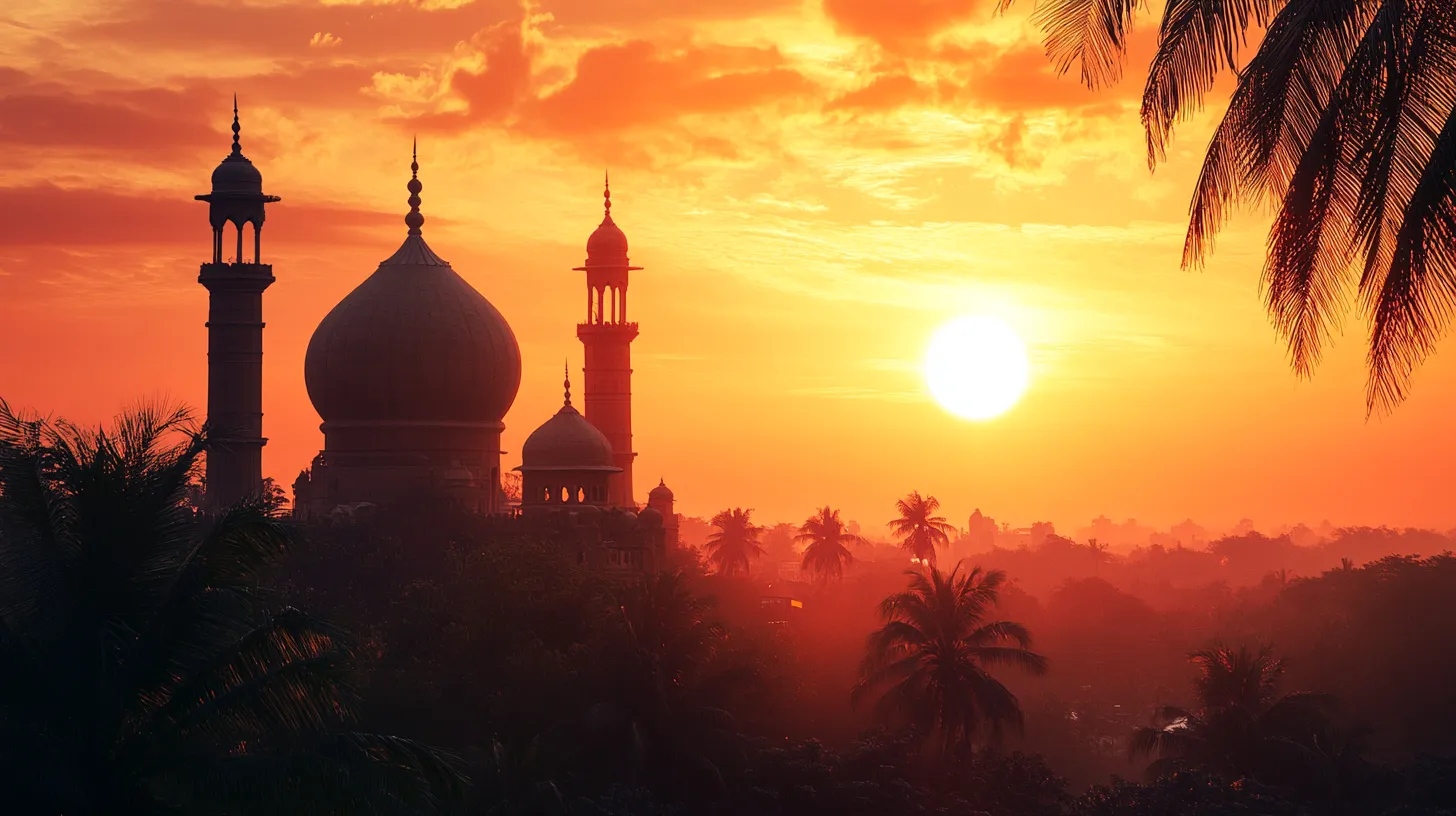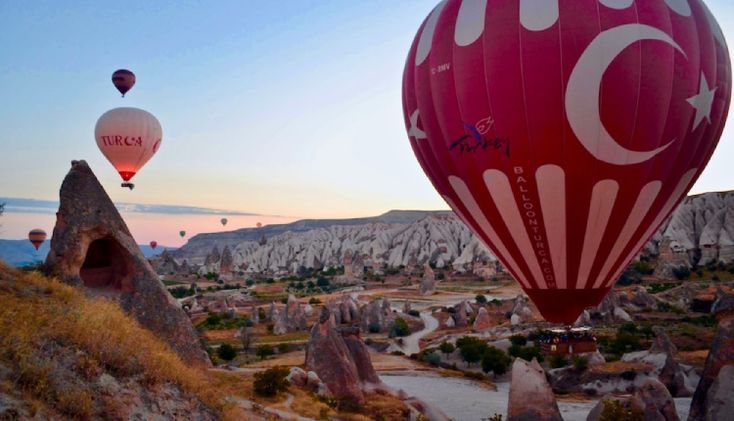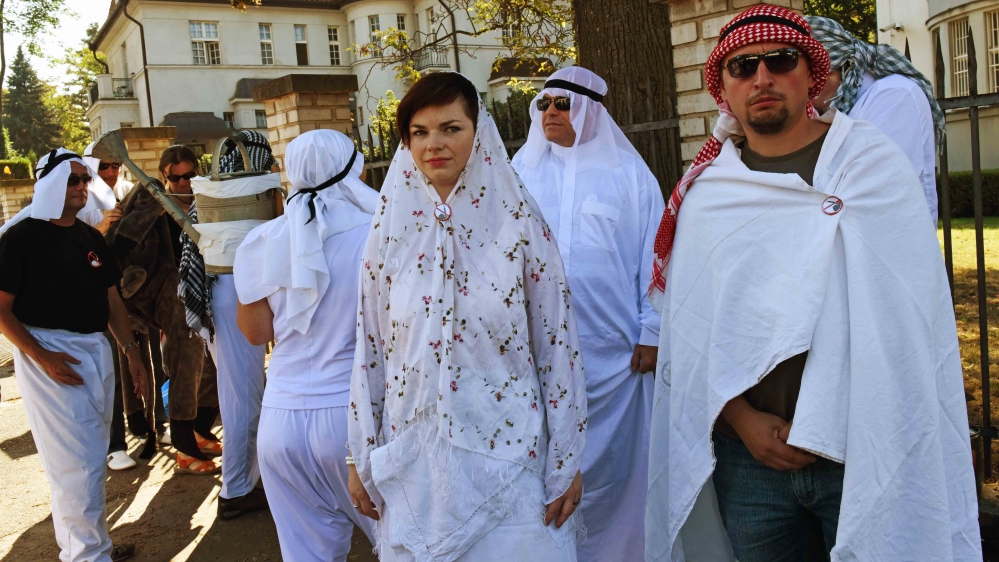Is The Muslim Country Hot
- Understanding Climate in Muslim Countries
- Geographical Factors Affecting Temperature
- Cultural Perceptions of Heat Across Regions
- Impact of Climate on Daily Life and Activities
- Comparative Analysis with Non-Muslim Countries
Understanding Climate in Muslim Countries
Muslim countries span a vast array of climates and geographical regions, exhibiting diverse weather patterns that shape the living conditions and daily activities of their inhabitants. This variety is influenced by several factors, including latitude, elevation, proximity to water bodies, and prevailing wind patterns. It is essential to understand these climatic influences to grasp the compelling question, is the Muslim country hot?
Regions across the Muslim world experience varied temperature ranges due to their unique geographical positioning. For instance, Middle Eastern nations, such as Saudi Arabia and Iraq, are predominantly characterized by arid desert climates. These countries endure extreme temperatures, particularly in summer, often exceeding 130°F (54°C) in areas like the Rub’ al Khali desert, also known as the Empty Quarter. Such conditions lead to a profound understanding of heat in daily life, leading to adaptations in architecture, clothing, and even social customs.
Conversely, other Muslim-majority countries, such as Indonesia and Malaysia, experience tropical climates marked by high humidity and substantial rainfall throughout the year. This tropical climate results in warm temperatures but mitigates the sweltering heat that characterizes arid regions, producing a different set of cultural and social responses to the climate.
- Holy Quran Part 30 (JUZ AMMA) Book with English Translation (12 Pcs Lot)
- Dr.Mustafa Khattab (Author)
- English (Publication Language)
- 416 Pages - 12/26/2015 (Publication Date) - Message for Humanity (Publisher)
- Karroum, Bachar (Author)
- English (Publication Language)
- 129 Pages - 02/08/2023 (Publication Date) - GoodHearted Books Inc. (Publisher)
Furthermore, North African countries like Egypt and Morocco display a Mediterranean climate along their coastal areas, while their inland territories may shift towards a more arid climate. The coastal regions enjoy milder temperatures while the interior can become scorching during the peak summer months.
In South Asia, countries such as Pakistan and Bangladesh experience distinct seasonal changes, with monsoon rains dramatically cooling the scorching summer months. In urban areas, the phenomenon of urban heat islands can exacerbate temperature increases, resulting from heat-absorbing materials, decreased vegetation, and energy consumption patterns.
Despite the variations, the unifying concern remains a shared experience of heat. Communities often find inventive ways to adapt to their environments, exemplified by traditional architectural designs that include thick exterior walls and high ceilings to maintain cooler indoor temperatures. The cultural significance of heat management can also be observed through clothing choices, where lighter fabrics and loose-fitting attire are preferred to facilitate airflow and comfort in hot climates.
Understanding the climate in Muslim countries is not solely about documenting temperature extremes but delving deeper into the relationship between people and their environment. The climate influences agricultural practices, culinary traditions, and even leisure activities, making it a pivotal aspect of the cultural identity in these regions. Thus, one may conclude that while answers may vary based on specific country contexts, the inquiry into whether a Muslim country is hot leads to broader reflections on adaptability, resilience, and cultural practices shaped by environmental factors.
Overall, the dynamics of climate in Muslim countries encapsulate a spectrum of experiences. From extreme dry heat to humid tropical conditions, the cultural landscape is intricately woven with the fabric of climate, guiding the way people interact with one another and their surroundings. As we explore further, we will delve into the geographical factors affecting temperature, providing insights into how physical landscapes contribute to these climatic variations.
- Holy Quran Part 30 (JUZ AMMA) Book with English Translation (12 Pcs Lot)
- Dr.Mustafa Khattab (Author)
- English (Publication Language)
- 416 Pages - 12/26/2015 (Publication Date) - Message for Humanity (Publisher)
- Karroum, Bachar (Author)
- English (Publication Language)
- 129 Pages - 02/08/2023 (Publication Date) - GoodHearted Books Inc. (Publisher)
Geographical Factors Affecting Temperature
Geographical factors play a pivotal role in determining temperature variations within Muslim-majority countries, contributing significantly to the question, “Is the Muslim country hot?” These factors include latitude, altitude, proximity to sea bodies, and the geographical features unique to each region. Collectively, they dictate the climatic conditions that can make certain areas experience extreme heat while others enjoy a milder climate.
Latitude serves as one of the most critical determinants of climate. Countries situated closer to the equator, such as Indonesia and Malaysia, typically encounter a tropical climate characterized by high humidity and consistent warmth year-round. Conversely, Muslim countries situated at higher latitudes, such as Turkey, experience more distinct seasonal changes, including cold winters and warm summers. This variation in latitude affects not only temperatures but also the types of agriculture and daily life activities practiced within these regions.
The influence of altitude cannot be overstated. In mountainous Muslim countries, such as Afghanistan and parts of Iran, higher elevations result in significantly cooler temperatures. For example, cities like Kabul, situated at over 5,900 feet (1,800 meters) above sea level, enjoy far more temperate conditions than the low-lying desert areas of the Middle East. Interestingly, while the lower regions may bake under the direct sun, the cooler mountain air allows for different agricultural practices and residential experiences, highlighting that geography directly impacts the heat people face.
Proximity to oceans and seas also shapes the climates in Muslim countries. Coastal regions, such as those in Egypt and Morocco, benefit from the moderating effects of ocean currents. The Mediterranean Sea plays a vital role in regulating temperatures, leading to more comfortable weather patterns during summer and winter months. In contrast, landlocked countries or those heavily influenced by deserts, such as Jordan and Iraq, often experience extreme temperature fluctuations between day and night. The lack of moisture in these areas means that they can heat up rapidly under the sun while cooling down dramatically after sunset, posing unique challenges and adaptations for local inhabitants.
The unique geographical features found in various Muslim countries contribute to their climatic identities. For instance, the presence of deserts significantly impacts the lifestyle and daily routines of people living in those areas. Countries like Saudi Arabia and the United Arab Emirates experience some of the highest recorded temperatures and the harshest conditions, which forces residents to adapt by implementing cultural practices that differ based on regional climates. Traditional dwellings are often built with thick walls and small windows to fend off the heat, while public spaces provide shaded areas to escape the scorching sun.
In contrast, regions with significant green landscapes, such as the forests of Indonesia, offer a stark testimony to how luxuriant vegetation affects temperature and quality of life. The dense flora not only helps cool the local environment through transpiration but also supports a diverse range of ecosystems that are crucial for agriculture and biodiversity. This underscores how a country’s natural geography can help answer the question of heat, revealing the varied experiences of residents based on their unique environments.
Furthermore, the urbanization trend within Muslim-majority nations also affects local climates. Rapid city development often leads to urban heat islands, where metropolitan areas experience higher temperatures than their rural surroundings due to the concentration of buildings, roads, and minimal vegetation. Cities like Dubai are notable examples where extensive construction initiatives have led to considerable temperature increases, challenging residents to adjust their daily habits and city planning to combat excessive heat.
Exploring the geographical factors affecting temperature within Muslim countries reveals a rich tapestry of climate experiences. As temperatures fluctuate from region to region, the interplay between natural geography, human adaptation, and cultural practices emerges as a crucial narrative to understand. The analysis of topography, latitude, altitude, and proximity to water bodies can indeed provide insightful answers to the question surrounding the heat of Muslim-majority nations, illustrating that heat is not merely a numerical value but a complex climatic story that shapes everyday life.
In essence, the diverse geographical landscapes encompass realities that range from oppressive desert heat to the gentle breezes of coastal life. Each country’s unique environment shapes not just the temperature but also the lifestyle and cultural fabric of its inhabitants, setting the stage for further exploration into how these climatic factors influence perceptions of heat and daily living conditions across the Islamic world.
Cultural Perceptions of Heat Across Regions
Cultural responses to heat vary significantly across the diverse landscapes of Muslim-majority countries, where local traditions, social customs, and public life are profoundly affected by climatic conditions. In answering the question, “Is the Muslim country hot?” it is essential to explore how these cultural perceptions of heat influence everyday life and community interactions.
- Holy Quran Part 30 (JUZ AMMA) Book with English Translation (12 Pcs Lot)
- Dr.Mustafa Khattab (Author)
- English (Publication Language)
- 416 Pages - 12/26/2015 (Publication Date) - Message for Humanity (Publisher)
- Karroum, Bachar (Author)
- English (Publication Language)
- 129 Pages - 02/08/2023 (Publication Date) - GoodHearted Books Inc. (Publisher)
In regions characterized by extreme heat, such as the Middle East, cultural practices often center around the need for adaptation and resilience. Here, communities have developed a variety of traditions that reflect their experiences with high temperatures. For example, during the peak summer months, activities tend to shift to cooler parts of the day, with early mornings and late evenings being the most active times. This behavior is not just an adaptation to avoid the heat; it is deeply embedded in the social fabric. Evening gatherings, such as family meals or communal celebrations, often occur outdoors under the stars, reflecting a cultural appreciation for community engagement despite the sweltering daytime temperatures.
In contrast, in tropical regions like Indonesia and Malaysia, where the climate is marked by high humidity and consistent warmth, the cultural perception of heat shifts from discomfort to an acceptance and integration into daily life. Traditional clothing, such as batik in Indonesia, not only serves aesthetic purposes but also is designed to be lightweight and breathable, accommodating the warm climate while providing a deep cultural significance. Community festivals and local markets thrive in these conditions, showcasing how cultural practices can flourish rather than falter, despite the presence of heat.
As we delve into different countries, the impact of heat on religious practices also becomes evident. In many Islamic cultures, daily prayers occurring five times a day necessitate a unique relationship with the environment. For example, in countries where the question “Is the Muslim country hot?” is frequently on the minds of the residents, it is common to find adaptations such as shaded areas in mosques or designated prayer times that consider the temperature’s intensity, illustrating how faith and climate intersect to shape community behaviors.
Urban areas across Muslim-majority nations, such as Cairo or Kuala Lumpur, further illustrate how cultural perceptions of heat are visually and experientially manifested. The concept of the “siesta,” or afternoon rest, is a notable custom adopted in many regions where the heat is overwhelming. In urban settings, these cultural choices impact work schedules, social interactions, and even architectural design, leading to more open spaces and cooling features integrated into new constructions to accommodate the scorching heat of midday.
The prevalence of shaded marketplaces (souks) or bazaars also exemplifies the cultural ingenuity in response to high temperatures. These traditional spaces are designed with narrow passages, tall buildings, and awnings to shield shoppers from the intense sun. In many cases, it becomes a part of the community identity, with these markets serving not just as shopping centers but also as social gathering hubs where people come to interact, trade, and connect, demonstrating the resilience of cultural practices in the face of climatic challenges.
Examining cultural perceptions of heat highlights how climate is not the sole determinant of experiences within Muslim-majority countries. Instead, the social constructs and interactions that arise in response to climatic conditions paint a more comprehensive picture of life in these regions. Through architectural choices, lifestyle adaptations, and communal practices, the question, “Is the Muslim country hot?” transitions from a mere inquiry about temperature to a broader examination of how communities engage with their environment.
The following table provides a comparative look at average temperature and cultural adaptations in selected Muslim-majority nations, illustrating the diverse experiences shaped by climate:
| Country | Average Summer Temperature (°F) | Cultural Adaptation |
|---|---|---|
| Saudi Arabia | 115°F | Evening social gatherings, traditional architecture with thick walls |
| Indonesia | 86°F | Lightweight clothing, outdoor festivals year-round |
| Egypt | 104°F | Afternoon siestas, shaded souks for shopping |
| Pakistan | 100°F | Cooling techniques in homes, evening markets |
| Turkey | 91°F | Use of outdoor spaces for dining and community events |
The interplay between climate and culture in Muslim countries enriches our understanding of heat and the various ways it shapes daily life. By analyzing different responses to climate, we gain insight into the resilience of these communities, underlining that while heat presents challenges, it also fosters creativity, adaptability, and a profound sense of community. The question of heat leads us deeper into the human experience, revealing how each culture navigates and transforms environmental challenges into opportunities for connection and growth.
Impact of Climate on Daily Life and Activities

In cities like Dubai and Riyadh, residents adapt by structuring their workdays to start earlier, allowing afternoons to be reserved for indoor activities. This adaptation is reflected in urban planning as well, with large shopping malls featuring climate-controlled environments that attract locals seeking refuge from the heat. These amenities transform how communities interact, making indoor spaces an integral part of social life, particularly during the hot summer months. Such adaptations reveal a core element of the narrative surrounding “is the Muslim country hot,” illustrating how climate dictates not just temperature, but also the rhythms of daily existence.
The use of architecture to combat heat is another fascinating area worth exploring. Traditional designs in arid climates often feature thick walls and small windows, aimed at keeping interiors cool. This architectural style is deeply rooted in cultural traditions and climate resistance strategies that have developed over centuries. In addition, homes in many Muslim-majority areas are often equipped with courtyards, allowing for air circulation and a shaded area where families can gather and socialize, providing relief from the oppressive outdoor temperatures. Such environmental adaptations reflect the resilience of these communities and their ability to maintain social structures despite climatic challenges.
Moreover, in regions like North Africa, the local culture adapts to the heat through communal activities that are sensitive to temperature variations. This is evident during the Holy Month of Ramadan, when fasting occurs from dawn to dusk. In many countries, evening meals known as iftars become vibrant community events, celebrating togetherness and resilience against the summer heat. Streets come alive at night, with families and friends gathering at open-air restaurants and cafes, further emphasizing that while heat can constrain activities, it can also inspire unique cultural phenomena.
In Southeast Asia, the high humidity levels, typical of Indonesia and Malaysia, influence daily routines differently. Here, midday siestas are common, allowing inhabitants to escape the heat and recharge. Markets bustle in the cooler hours of the day, with vendors often selling lighter, refreshing foods that are easier to consume in warm climates. The integration of cultural practices with climatic conditions highlights not only how communities respond to environmental stressors but also how they thrive in them. The motto could be seen as, “Where there is heat, creativity flourishes,” as local innovations emerge to capture the essence of life in these warm climates.
Importantly, the cultural significance of cuisine often shifts with the climate as well. In hot regions, meals tend to include ingredients that are hydrating and refreshing, such as fruits and vegetables. The culinary traditions of communities in hot climates reflect a profound understanding of the thermal comfort that food can bring in extreme conditions, further enriching the dialogue about “is the Muslim country hot.” The noticeable emphasis on cooling and hydrating elements within cuisine serves to reinforce not only comfort but also communal ties, as food is often enjoyed together in shaded, cool environments.
In summary, the interplay between heat and daily activities in Muslim countries encapsulates a transformative relationship. The adaptations made by communities in response to extreme temperatures—from architectural designs to cultural practices—highlight not just the challenges posed by climate but also the remarkable resilience and creativity of their inhabitants. As we turn our focus toward cultural perceptions of heat across regions, we will further uncover how these climatic conditions shape collective identities and community dynamics in Muslim-majority countries.
For further insights on climate adaptation in hot regions, one can explore resources like World Bank on Climate Change Adaptation and NCBI’s exploration of climate impact on health and society.
Comparative Analysis with Non-Muslim Countries
The differences between Muslim-majority countries and their non-Muslim counterparts reveal significant variations in how climate impacts daily life and societal structures. To assess whether “is the Muslim country hot,” one must consider not only the temperatures experienced but also how these climatic factors influence cultural practices, economic activities, and social interactions across different regions.
The approach to hot climates varies widely between Muslim and non-Muslim countries, driven largely by historical context, geographical conditions, and cultural attitudes towards heat. Middle Eastern nations, such as Saudi Arabia and Iraq, face some of the most severe heat conditions globally. The extreme summer temperatures necessitate unique adaptations in everyday life; for example, it is commonplace for work hours to be adjusted to avoid the hottest parts of the day. Outdoor activities are typically reserved for the cooler morning and evening hours, reflecting a lifestyle optimization strategy to cope with the harsh climate. The architectural solutions, such as high ceilings, thick walls, and the incorporation of shaded outdoor spaces, demonstrate an intrinsic understanding of how best to navigate the relentless heat, which is distinctly evident in the region’s cultural fabric.
In contrast, non-Muslim countries with similar climatic conditions, such as parts of Australia and Southern Europe, often showcase different adaptation methods. For instance, in Australia, where extreme temperatures can also reach above 104°F, the cultural response involves a blend of lifestyle habits and technological solutions, such as air conditioning and thermal mass housing designs. Beaches and outdoor culture thrive in these warm climates, where swimming and recreational activities are embraced rather than avoided. This demonstrates a more open social engagement with the heat, reflecting a different cultural attitude towards high temperatures.
Southeast Asian countries, predominantly Muslim, such as Indonesia and Malaysia, experience tropical climates with high humidity levels which impact lifestyles significantly. The acceptance of heat as a norm is evident here—local customs often incorporate midday rests to evade the discomfort of rising temperatures. The market culture thrives in the cooler hours, with evening bazaars offering both respite from the heat and vibrant social gatherings. This contrasts with many non-Muslim tropical regions, where consistent outdoor activity during the day remains prevalent and outdoor cafes and festivals dominate without the same level of midday disruption.
In North African countries like Egypt, the Mediterranean climate delivers unique adaptations in cultural practices as well. Unlike their Middle Eastern counterparts who may prioritize staying indoors, Egyptians embrace evening social life during Ramadan. The communal breaking of the fast involves vibrant street markets and gatherings that come alive under the nighttime sky, illustrating how the social fabric thrives in response to climatic conditions. Non-Muslim Mediterranean cultures, such as those in Spain and Italy, may have similar outdoor evening traditions, but their cultural narratives often include daytime siestas as a defined practice, reflecting a generalized acceptance of heat as part of life that is less pronounced in some Muslim-majority contexts.
Urbanization in both Muslim-majority and non-Muslim countries introduces additional complexities in climate adaptation. In cities like Cairo, urban heat islands can exacerbate heat stress, leading to profound impacts on public health and comfort. Here, city planners often prioritize shady public spaces, cooling systems, and green infrastructure to mitigate the oppressive urban heat, paralleling strategies employed in non-Muslim urban centers that experience similar challenges, like Los Angeles or Tokyo. However, cultural factors heavily influence the effectiveness and reception of these solutions, often dictating public engagement with such initiatives.
As we draw comparisons between Muslim-majority countries and their non-Muslim counterparts in terms of climate effects on daily life, we see that while both experience challenges from heat, the cultural responses are shaped by historical, social, and geographical contexts. The question, “is the Muslim country hot?” transcends a simple yes or no; rather, it fosters an exploration into how diverse lifestyles emerge in response to similar climatic pressures, revealing the resilience and ingenuity of communities across the globe in navigating their environmental realities.



















Post Comment